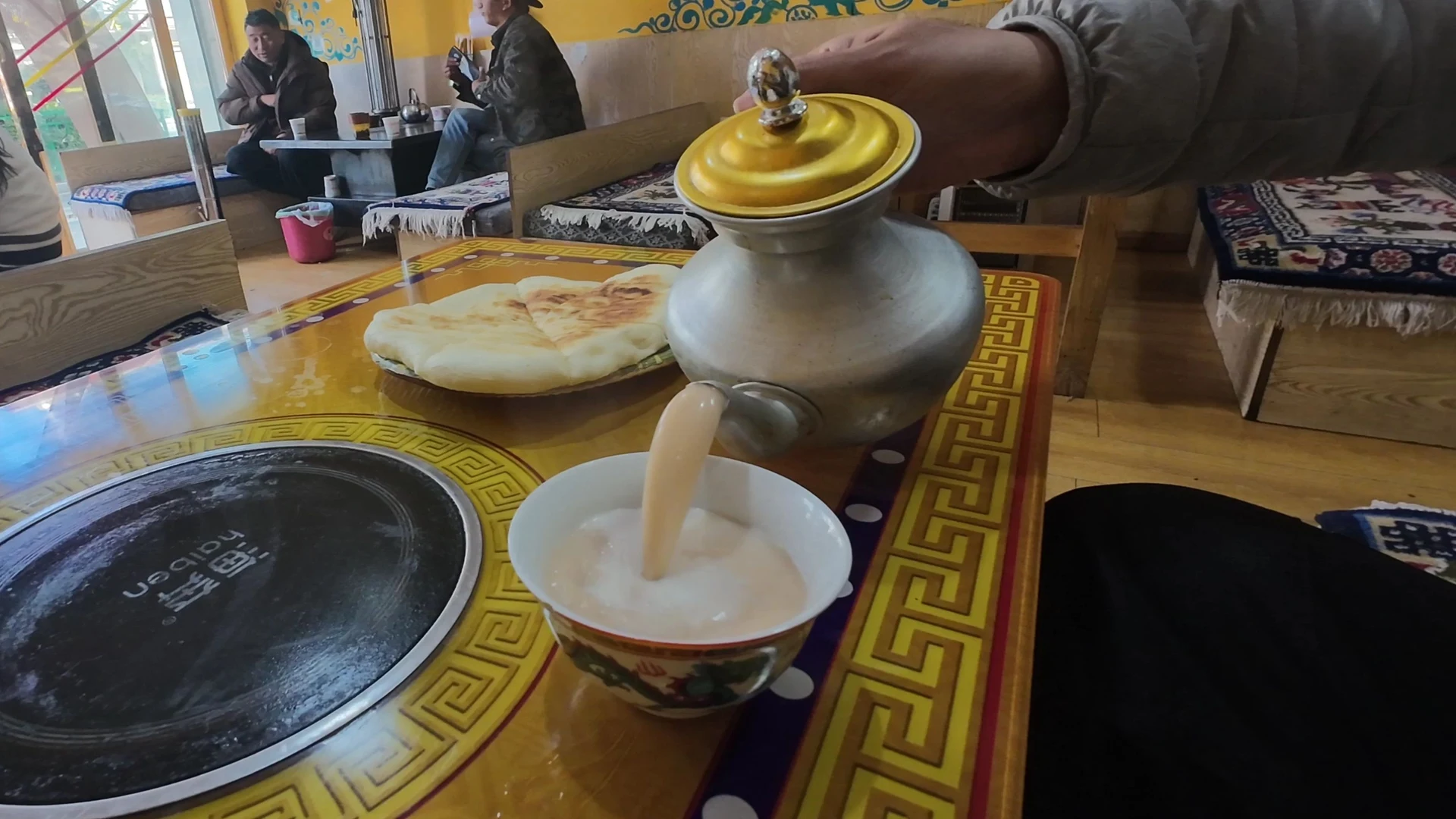Butter Tea, A Taste of Sichuan’s Gannan: A Culinary Journey
As a culinary professional, I have the pleasure of exploring various regional delicacies that embody the essence of their cultural heritage. One such delectable is the butter tea, a traditional drink from the Gannan Tibetan Autonomous Prefecture in Sichuan Province, China. This beverage is not just a simple drink but a testament to the resilience and cultural richness of the people who call the high plateau their home.
Origin and Cultural Background:
Butter tea, locally known as “Po Cha,” has been a staple in Tibetan households for centuries. Its origins can be traced back to the ancient tea-horse trade routes, where tea from the lowlands was exchanged for horses from the highlands. The nomadic lifestyle and the harsh climate of the Tibetan Plateau necessitated a drink that could provide warmth, energy, and nutrition. Thus, butter tea was born, a combination of tea, butter, and salt, which became a symbol of hospitality and a source of strength for the people.
Ingredients and Preparation:
The making of butter tea is an art form that requires specific ingredients and a particular method. The primary components are:
1. Brick Tea: The tea used is typically a compressed black tea brick, which is a result of the fermentation and oxidation of tea leaves. It is rich in tannins and has a robust, earthy flavor that is essential to the drink’s character.
2. Sour Butter: Made from yak or cow milk, the butter is allowed to ferment, giving it a tangy flavor that complements the tea.
3. Salt: A pinch of salt is added to enhance the drink’s savory profile.
The process of making butter tea is as follows:
– The brick tea is broken into small pieces and boiled in water until it reaches a strong, dark color.
– The tea is then strained, and the liquid is poured into a special churn called a “Dongma” with the sour butter and salt.
– The mixture is vigorously beaten until it becomes a frothy, creamy consistency.
Taste and Texture:
The resulting butter tea is a unique beverage with a rich, creamy texture and a taste that is both salty and slightly sweet. The butter adds a velvety richness, while the tea provides a robust backbone, and the salt balances the flavors, making it a comforting and satisfying drink.
Visual Description:
Visually, butter tea is a beautiful blend of golden hues with a creamy, whipped appearance. When served, it often has a slight sheen from the butter, and the froth on top adds a visually appealing layer of texture.
Representative Dishes and Cuisine:
While butter tea stands on its own as a beverage, it is also an integral part of a larger culinary tradition. It is often served alongside Tibetan bread, called “Tsampa,” which is made from roasted barley flour. The combination of butter tea and Tsampa is a classic meal that provides the necessary sustenance for a day’s work in the harsh high-altitude conditions.
Culinary Characteristics:
Butter tea is characterized by its high energy content, making it an ideal drink for the high-altitude regions where physical labor is common. The butter provides a significant amount of fat, which is a crucial source of energy in cold climates. The tea itself is rich in antioxidants and has a warming effect, while the salt helps to replenish electrolytes lost through perspiration.
In conclusion, butter tea is more than just a drink; it is a cultural icon that reflects the ingenuity and adaptability of the Tibetan people. It is a symbol of their history, a source of nourishment, and a drink that has stood the test of time, remaining a beloved part of their daily lives.
